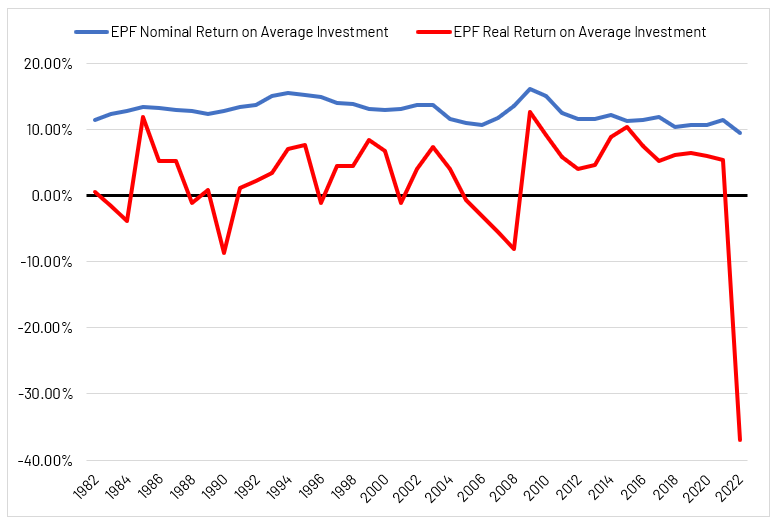Fact Check
In a broader discussion on Domestic Debt Restructuring (DDR), the MP claimed that the members of the Employees’ Provident Fund (EPF) are already ‘fairly burdened’ due to rising inflation, without the effects of DDR on the EPF. In support of his claim, the MP stated that:
(1) The 2.5% return guaranteed in the EPF Act of 1958 ensured a significant real return above inflation (which was around 1%) at the time.
(2) (a) The EPF has had both positive and negative real returns in different years; (b) specifically, in 2022, the real return of the EPF was negative 47%.
To evaluate these claims, FactCheck.lk consulted the EPF Act of 1958, the Special Statistical Appendix (SSA) of the Central Bank of Sri Lanka Annual Report 2022, the EPF Financial Statement 2022 (EPFFS) and the EPF Annual Report 2022 (EPFAR).
Claim 1: Table 3 of the SSA shows the recorded Colombo Consumer Price Index (CCPI) was 101.6 in 1953 and increased to 102.8 by 1957. These figures indicate that annual inflation ranged from -0.6% to 2.6% during the period with an average rate of 0.2%, which is lower than the 1% cited by the MP. However, this supports the MP’s argument that the 2.5% return stipulated in the EPF Act was set well above the expected average inflation rate at that time, ensuring members a rate of return above the rate of inflation.
Claim 2(a): Exhibit 1 confirms the MP’s claims that the EPF has experienced both negative and positive returns over the years.
Claim 2(b): In calculating the real returns, there are two valid, but different methods used by the EPF (method 1) and the MP (method 2, see Exhibit 2 and Additional Note 1). Exhibit 2 shows the MP’s calculation as correct in terms of method 2.
Even though the MP is not precise on the inflation between 1953 and 1957, the actual figures support his argument that the EPF Act implicitly stipulated a return significantly higher than inflation. The MP is also correct (using method 2) that the EPF return in 2022 was negative 47%.
Therefore, we classify his statement as TRUE.
*FactCheck.lk’s verdict is based on the most recent information that is publicly accessible. As with every fact check, if new information becomes available, FactCheck.lk will revisit the assessment.
Exhibit 1: Real and Nominal returns on the EPF

Sources: Annual Report, Central Bank of Sri Lanka 2022 | Annual Reports, Employee Provident Fund | Financial Statements, Employee Provident Fund
Exhibit 2: Real return on the EPF calculation methodologies

Additional Note 1:
The difference between MAIR and IRY is that MAIR is calculated as the percentage increase of the average value of the month-end CCPI over the year, against the same in the previous year. Meanwhile, IRY is calculated as the percentage increase in the CCPI at the end of December against the same in the previous year.
Sources
Employees Provident Fund Act, https://www.cbsl.gov.lk/sites/default/files/cbslweb_documents/laws/acts/en/epf_act.pdf
Special Statistical Appendix, Annual Report, Central Bank of Sri Lanka 2022, https://www.cbsl.gov.lk/sites/default/files/cbslweb_documents/publications/annual_report/2022/en/16_S_Appendix.pdf
Annual Reports, Employee Provident Fund, https://epf.lk/?page_id=243
Financial Statements, Employee Provident Fund, https://epf.lk/?page_id=2738


